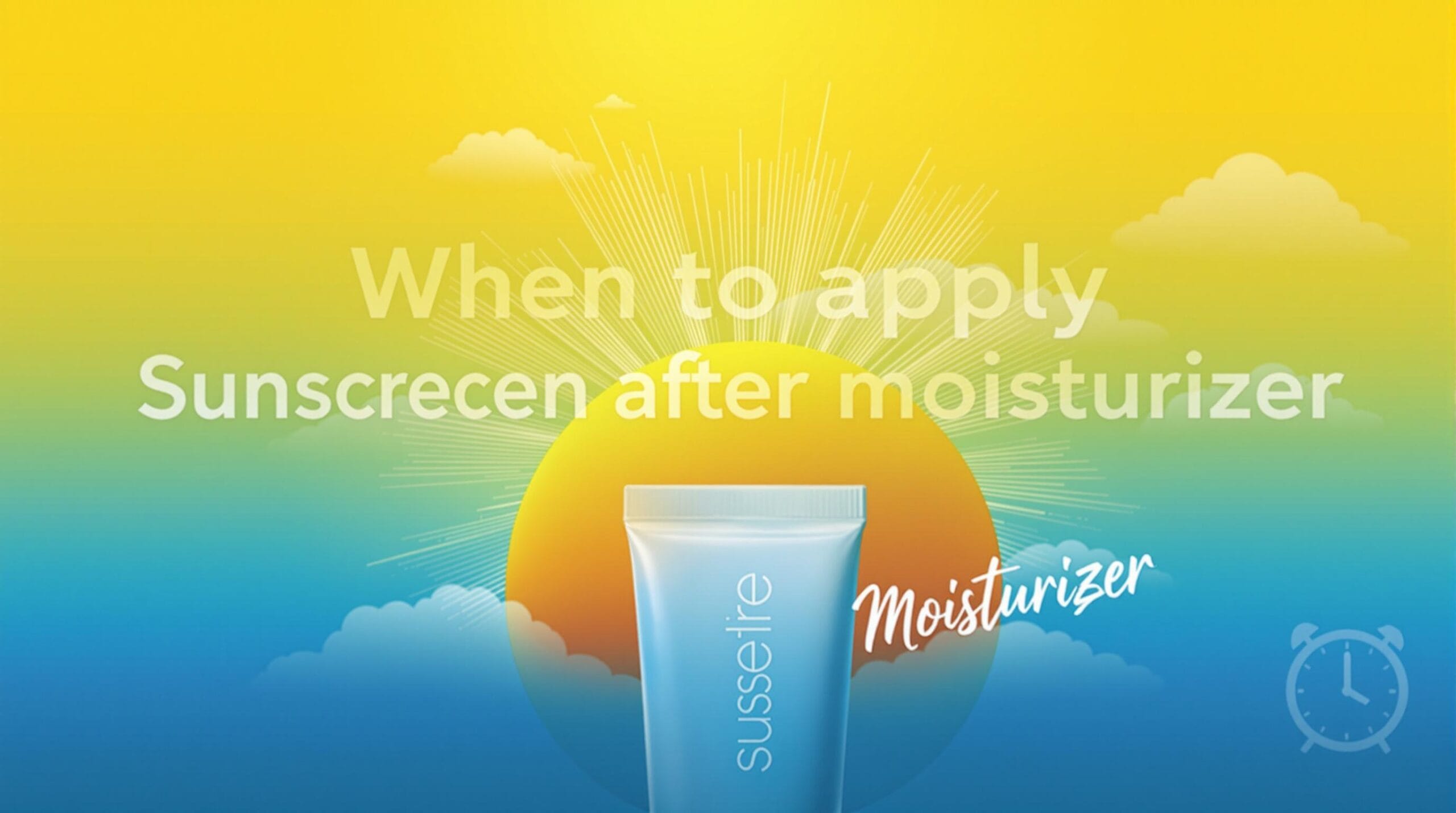
Sunscreen is an essential part of any skincare routine. It protects the skin from harmful ultraviolet (UV) rays, which can cause sunburn and long-term skin damage, including premature aging and skin cancer. Understanding sunscreen is crucial for maintaining healthy skin. There are two main types of sunscreen: physical and chemical. Physical sunscreens sit on the skin’s surface and reflect UV rays, while chemical sunscreens absorb UV rays through chemical reactions within the skin.
The Sun Protection Factor (SPF) rating of a sunscreen measures its effectiveness. An SPF of 30 blocks about 97% of UVB rays. Higher SPF ratings provide slight increases in protection but are not exponentially better. Daily use of sunscreen, even on cloudy days, is vital as UV rays can penetrate clouds and cause damage. Consistent application is key to maximizing protection and maintaining healthy skin.
The Moisturizer Conundrum: A Necessary Step?
Moisturizers play an important role in skincare, keeping the skin hydrated and plump. They help prevent dryness and can improve skin’s overall texture. Applying a moisturizer before sunscreen can create a smoother base for the sunscreen to adhere to, enhancing its effectiveness. Moreover, moisturizing keeps the skin barrier intact, ensuring it functions properly against environmental aggressors.
There are various types of moisturizers available, including gel-based sunscreens, cream-based, and oil-based products. Each type suits different skin needs. It is vital to understand individual skin type when selecting a moisturizer. A suitable moisturizer should feel comfortable and not interfere with the sunscreen’s effectiveness. Therefore, using a moisturizer that pairs well with sunscreen is essential for an effective skincare routine.
The Golden Rule: When to Apply Sunscreen?
The order of applying skincare products matters significantly for effectiveness. Generally, sunscreen should be applied after moisturizer. If applied before, the sunscreen can dilute the moisturizer and diminish its effectiveness. Thus, following the correct application sequence is essential for optimal skincare results. The ideal routine is: cleanse the skin, follow with moisturizer, and finish with sunscreen.
By applying sunscreen after moisturizer, users ensure maximum absorption of both products. This order allows the moisturizer to hydrate the skin, and the sunscreen to create a protective barrier. Following this sequence also helps to avoid issues with greasy or uneven application, resulting in better sun protection. Knowing when to apply sunscreen ensures that you get the most out of your skincare products.
The Science Behind Layering Products
The skin absorbs products in layers. This absorption is affected by the thickness of each product and its ingredients. When layering products, applying them in the correct order allows each product to penetrate the skin effectively. If the layer beneath is too thick or not absorbed before applying subsequent products, it may impact total absorption, leading to reduced effectiveness.
Proper absorption is not just about order; it’s also about the time you allow each product to settle. Sunscreen needs to sit on the skin’s surface to provide protection, while moisturizers should soak in. Therefore, understanding how your skin reacts can enhance your skincare routine. Applying products in the right order leads to better hydration and protection from environmental factors.
Time Matters: How Long to Wait?
After applying moisturizer, it is ideal to wait about 3 to 5 minutes before applying sunscreen. This waiting period allows the moisturizer to absorb fully into the skin. Factors that can influence absorption rates include skin type, the consistency of products, and even room temperature. Oily skin types may require less waiting time because their skin absorbs products quickly.
To ensure both products work effectively, consider using lightweight formulations to lessen any potential layering issues. Also, test different waiting times to find what works best for your skin. Adapting your routine can enhance both hydration and sun protection throughout the day.
Common Mistakes: What NOT to Do
Many people make common mistakes when applying moisturizers and sunscreens. One prevalent error is thinking sunscreen is unnecessary on cloudy days. Approximately 80% of UV rays can pass through clouds, so applying sunscreen remains essential regardless of the weather. Additionally, skipping the moisturizing step can leave the skin dry and less protected.
Another mistake is layering too many products, leading to pilling or ineffective application. Ensure that only compatible products are layered together. Also, avoid applying sunscreen too late; it should be put on 15-30 minutes before sun exposure to allow it to bond with the skin properly. Recognizing these errors can significantly improve your skincare routine.
Sunscreen on the Go: Quick Tips for Busy Bees
For those with busy schedules, applying sunscreen while on the go can be challenging. One simple solution is using spray or powder sunscreens that offer UV protection without the need for traditional application. These options blend conveniently with makeup and can easily be reapplied throughout the day for continued protection.
For quick reapplication, consider SPF-infused setting sprays that can seamlessly refresh your sunscreen while maintaining your makeup. Develop a habit of carrying a travel-sized sunscreen or a specific makeup product that includes sun protection. This strategy keeps your skin safe from UV damage, even amidst a busy day.
Seasonal Sun Care: Adjusting Your Routine
As seasons change, so should your skincare routine. In summer, opt for sunscreens with higher SPF and water resistance due to increased sun exposure. In colder months, find moisturizing formulas that prevent dryness caused by cold air and indoor heating. Understanding how your skin reacts to temperature can help you select suitable sunscreens and moisturizers.
Additionally, tailoring your products to your skin type is essential across seasons. Oily skin may need lighter gel-based sunscreens, while dry skin benefits from creamier formulations. Changing priorities based on the season ensures that your skin remains hydrated and protected year-round.
Bonus: Legal Sunscreen Myths Busted!
Let’s debunk a few common myths surrounding sunscreen application. Firstly, many people believe that applying sunscreen once in the morning is enough. In reality, sunscreen needs to be reapplied every two hours for effective protection. Secondly, some think dark-skinned individuals do not need sunscreen, but this is false. All skin types require sun protection to maintain skin health.
Finally, the myth that makeup with SPF negates the need for separate sunscreen usage is misleading. While it may offer some protection, it likely won’t provide the necessary coverage. Educating readers about these myths can empower them to make informed decisions regarding their sun care habits.
Conclusion: Your Skin Deserves the Best!
Applying sunscreen after moisturizer is crucial for effective skincare. By following this order, you ensure maximum hydration and optimal sun protection. Rethink your skincare routine by prioritizing this golden rule for healthier, protected skin.
Start today—your skin deserves the best! Don’t forget to explore comprehensive options for selecting the right sunscreens for your needs.







